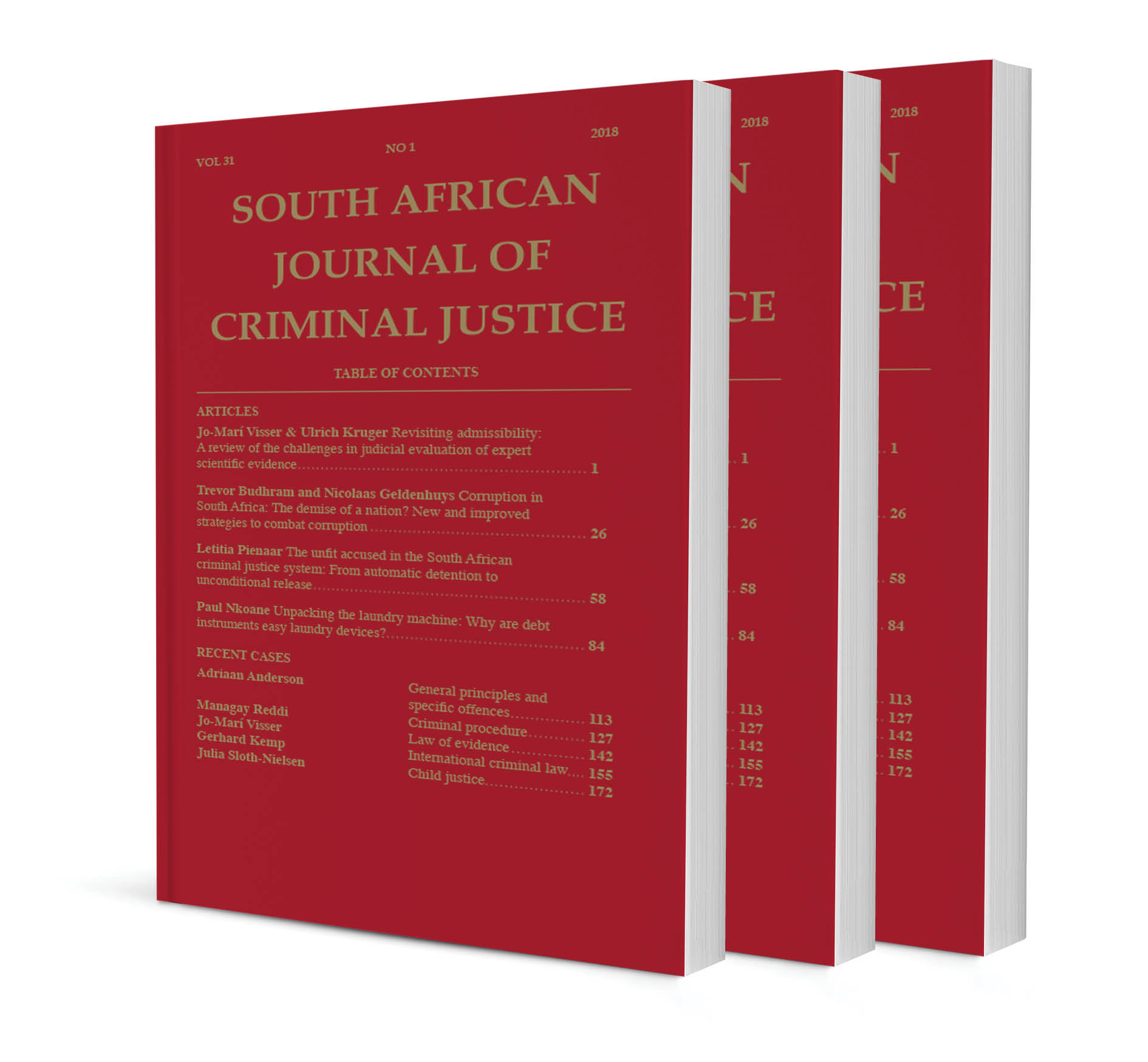Fingerprint evidence under scrutiny: Issues raised by six international forensic reports (Part 1)

Fingerprint evidence under scrutiny: Issues raised by six international forensic reports (Part 1)
Authors Lirieka Meintjes-Van Der Walt & Mercy Chiwara
ISSN: 1996-2118 Affiliations: BJuris LLB (UPE) LLM (Rhodes) LLD (Leiden); Adjunct Professor of Law & Leader of the Law, Science and Justice Research Niche Area, University of Fort Hare; LLB LLM (UFH) Source: South African Journal of Criminal Justice, Volume 32 Issue 2, p. 155 – 180Abstract
In an attempt to scrutinise the scientific, and therefore legal, value of fingerprint evidence, this article, in two parts, interrogates problems and challenges with regard to fingerprint evidence, which have been critically discussed and evaluated in six seminal international forensic reports compiled between 2006 and 2017. The incisive, authoritative and extensive reports which are examined and interrogated in this article, include a 2007 report on a review of the FBI’s handling of the Brandon Mayfield case (Mayfield Report) (consisting of 275 pages); the 2009 report compiled by the National Research Council (NAS Report) (consisting of 350 pages); the 2011 Scottish Fingerprint Inquiry Report (SFI Report) (consisting of 750 pages); the 2012 National Institute of Science and Technology Report (NIST Report) (consisting of 249 pages), the 2016 Forensic Science in Criminal Courts: Ensuring Scientific Validity of Feature-Comparison Methods Report by the President’s Council of Advisors on Science and Technology (PCAST Report) (consisting of 174 pages) and the 2017 Forensic Science Assessments: A Quality and Gap Analysis: Latent Fingerprint Examination of the American Association for the Advancement of Science (AAAS Report) (consisting of 166 pages). Part 1 of the article focusses on the Mayfield report and the NAS Report. Part 2 deals with the SFI Report, the NIST Report, the PCAST Report and the AAAS Report. Part 1 of this article summarises the recommendations of the first two reports and concludes with a short discussion of the effects of the NAS Report on case law.